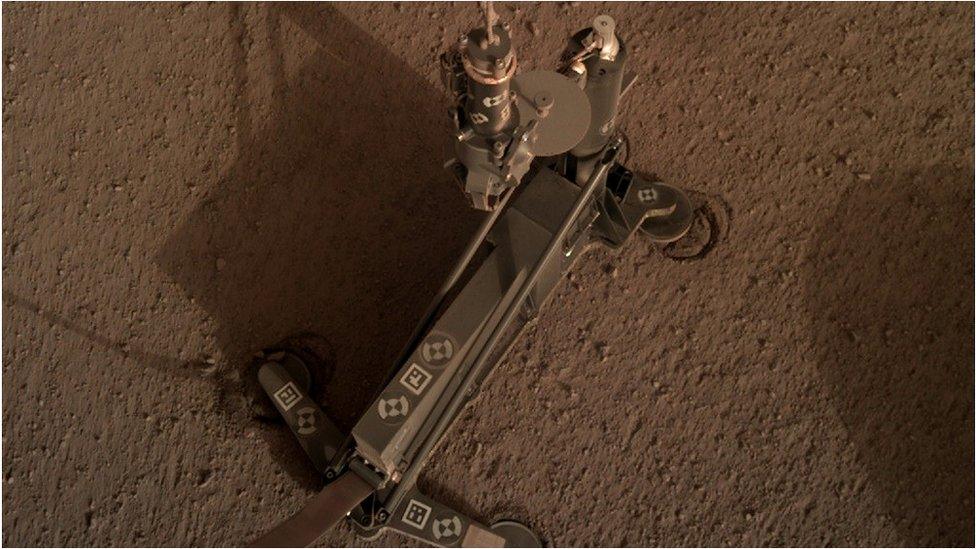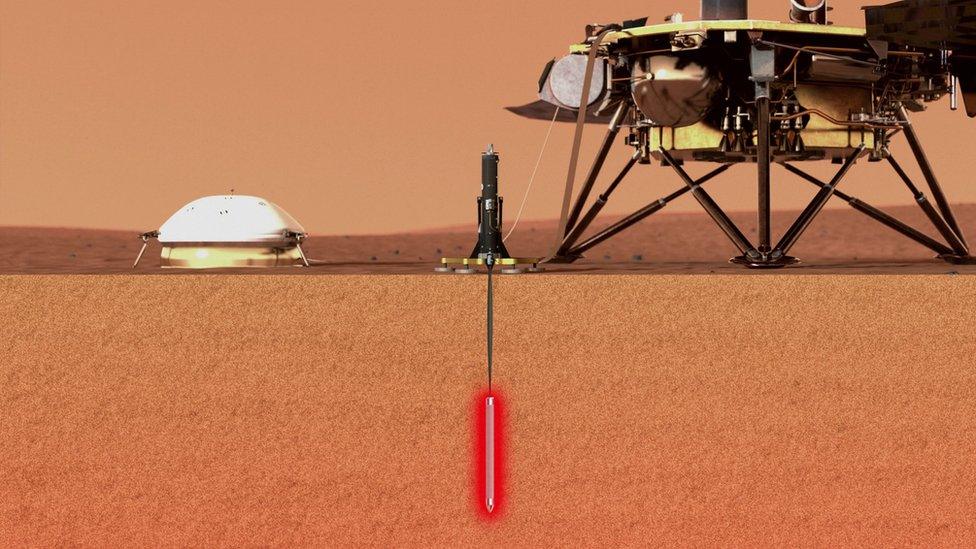Nasa InSight probe: Mars 'mole' hits blockage in its burrow
- Published

HP3 is a German-led experiment on the Nasa Mars lander
The Insight probe's efforts to drill down below the surface of Mars appear to have hit some stony obstructions.
The US space agency lander's HP3 "mole" was designed to dig up to 5m into the ground and began burrowing last week.
But controllers back on Earth called a halt to operations when no progress was being made despite repeated hammering.
Analysis suggests the 40cm-long mole mechanism, which will measure Mars' temperature, has barely got out of the tube that was guiding its descent.
The instrument is also now tilted away from the vertical.
It penetrated to a depth between 18cm and 50cm into the Martian soil with 4,000 hammer blows over a period of four hours, explained Tilman Spohn, external, HP3's principal investigator from the German space agency (DLR).
"On its way into the depths, the mole seems to have hit a stone, tilted about 15 degrees and pushed it aside or passed it," he added.
"The mole then worked its way up against another stone at an advanced depth until the planned four-hour operating time of the first sequence expired."

The HP3 mole was designed to dig up to 5m into the ground
Prof Spohn said there would now be a break in operations of two weeks while the situation was assessed.
The Insight probe is sitting on flat terrain close to the equator in a region referred to as Elysium Planitia.
The location was chosen after extensive study from orbit indicated the soil in the area might be deep with few sub-surface obstacles.
But the presence of hidden rocks was always a possibility, and even expected.
Tests back on Earth prior to the mission getting under way demonstrated that the mole could handle coarse gravel and, given plenty of hammering time, even move larger stones out of the way. So this stoppage is by no means the end of the matter.
"Planetary exploration is not as easy as pie," stressed, Prof Spohn.

HP3 and the sesimometer sensors were lifted on to the surface via a robotic arm
The good news is that HP3's sensors can proceed with the first temperature measurements.
The idea of the experiment is to find out how heat from the interior of the planet is being dissipated.
This will give "insights" into how much natural radioactive decay is occurring inside Mars, and how much energy the planet still retains from its formation more than 4.5 billion years ago.
Two other instrument packages on the probe are conducting complementary investigations.
A seismometer system is checking the ground for "Marsquakes" - vibrations that could come from ongoing geological activity or from meteorite strikes. And a radio experiment is being used to check if the planet is wobbling on its axis - an indicator that it might have a liquid metal core like the Earth.
Jonathan.Amos-INTERNET@bbc.co.uk, external and follow me on Twitter: @BBCAmos, external